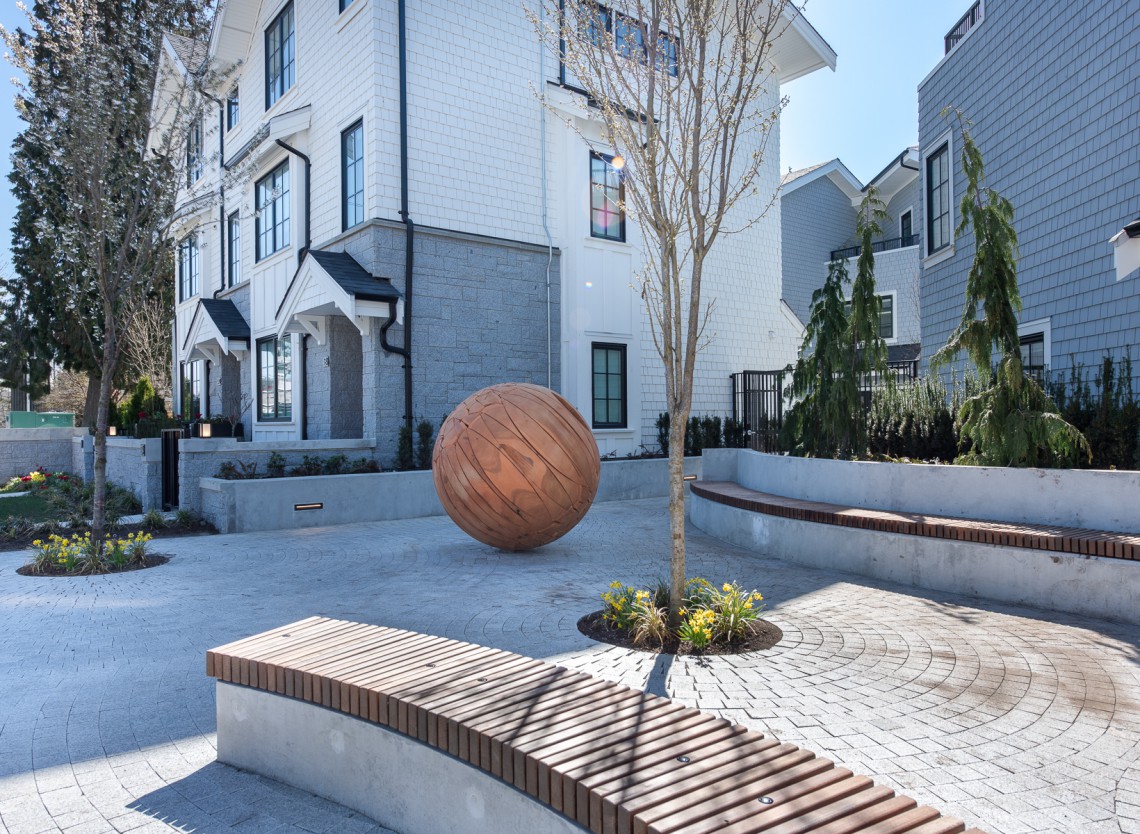The real estate market in Greater Vancouver has recently faced uncertainty and change. One thing all developers and builders are certain about . . . the future of green building practices.
Designing homes and buildings that are energy efficient, use sustainable materials, and can lessen the impact on the environment during their construction are a critical part of the future of this industry. It has become industry standard to incorporate sustainable building practices and design for the future with that in mind, from operational systems within the home or building, through to interior and exterior finishes, water conservation, and air quality.
Sustainable and green building practices are an important part of design from the initial concept to the construction stages. The very core of the building materials chosen have a sustainable impact. Insulation and carpet underlay can include recyclable materials.
Further, it is beneficial to have the building materials sourced locally, within 800 kilometres of the site whenever possible. The transportation of building materials can be a substantial energy use and the local manufacturing and transportation of these materials reduces this energy consumption.
Additionally, all trades should be required to recycle their own waste, including leftover material and packaging to reduce landfill waste and contribute to a cleaner working environment.
Within and Around Your Home
Environmental responsibility should extend to the interior of each home. These key features are becoming more and more common.
As multifamily living continues to grow in popularity both by choice and necessity, green and sustainable features are becoming a key component to the interior design of such communities. Some of these features have been around as options for years but are becoming more and more standard.
Natural-based materials for carpeting, for example. Natural wool carpets are durable and use less secondary backing materials and chemicals. Off-gassing is typically caused by secondary backings and chemical additions in synthetic carpets. Including a natural wool carpet in the home provides a durable material and one that is more natural and attractive, with fewer harmful chemical components present.
The same can be said for air quality inside your home and how paint and certain finishes can negatively impact it. In today’s home-building industry, paints are water-based with low VOC levels (Volatile Organic Compounds). VOCs are a class of chemical compounds that can cause short- or long-term health problems and negatively affect the indoor air quality of your home and your personal health. Mandating water-based paints and finishes can avoid those harmful chemicals while contributing less environmental impact, too. Those features are just a few samples of what is becoming more commonplace.
Within the last 5 years, there has been even more emphasis placed on air quality inside the home. Recently, the inclusion of HRVs (Heat Recovery Ventilators) have been a new addition that has greatly improved the indoor air quality and overall sustainability features of multifamily living. A Heat Recovery Ventilator is an air exchanger that exhausts humid, stale, polluted air out of the home and draws in fresh, clean outdoor air into the home.
Invisible pollutants produced by common household substances, plus dust and excess humidity that get trapped in today’s homes, can increase your risk of chronic respiratory illness and your home’s risk of serious structural damage. Our recent projects have all included HRVs as an added feature to help benefit the air quality and comfort for our homeowners.
The Added Extras that aren’t really Extra anymore
Because more and more homeowners are becoming aware of sustainable features and the importance of green building in new home construction, the overarching trend of including green and sustainable features has shifted from added extras in your home to standard, expected inclusions.
Things like Energy-Star-rated appliance packages that reduce energy consumption and the associated fees were once marketed as an added extra. Today, homeowners expect (and most homebuilders are required) to have this included in their new home. The same goes for water-saving appliances and faucets that reduce water and energy consumption. Highly insulated windows that make the home more comfortable year-round while reducing outside noise and condensation on the windows were once “added extras” that are now the industry norm.
Electric cars are becoming more common and are thought to be the vehicle of the future. Vehicle-charging stations are an added level of convenience that makes it easier to incorporate green and sustainable practices into daily lifestyle.
The Future of Green Building
Embracing all aspects of sustainability better prepares us for a forward-thinking future for families, for communities, and for all.
As climate change continues and our industry grows and matures, green and sustainable building practices will become more and more important to the survival of the homebuilding industry, not just locally but internationally.
